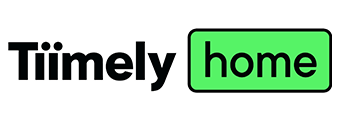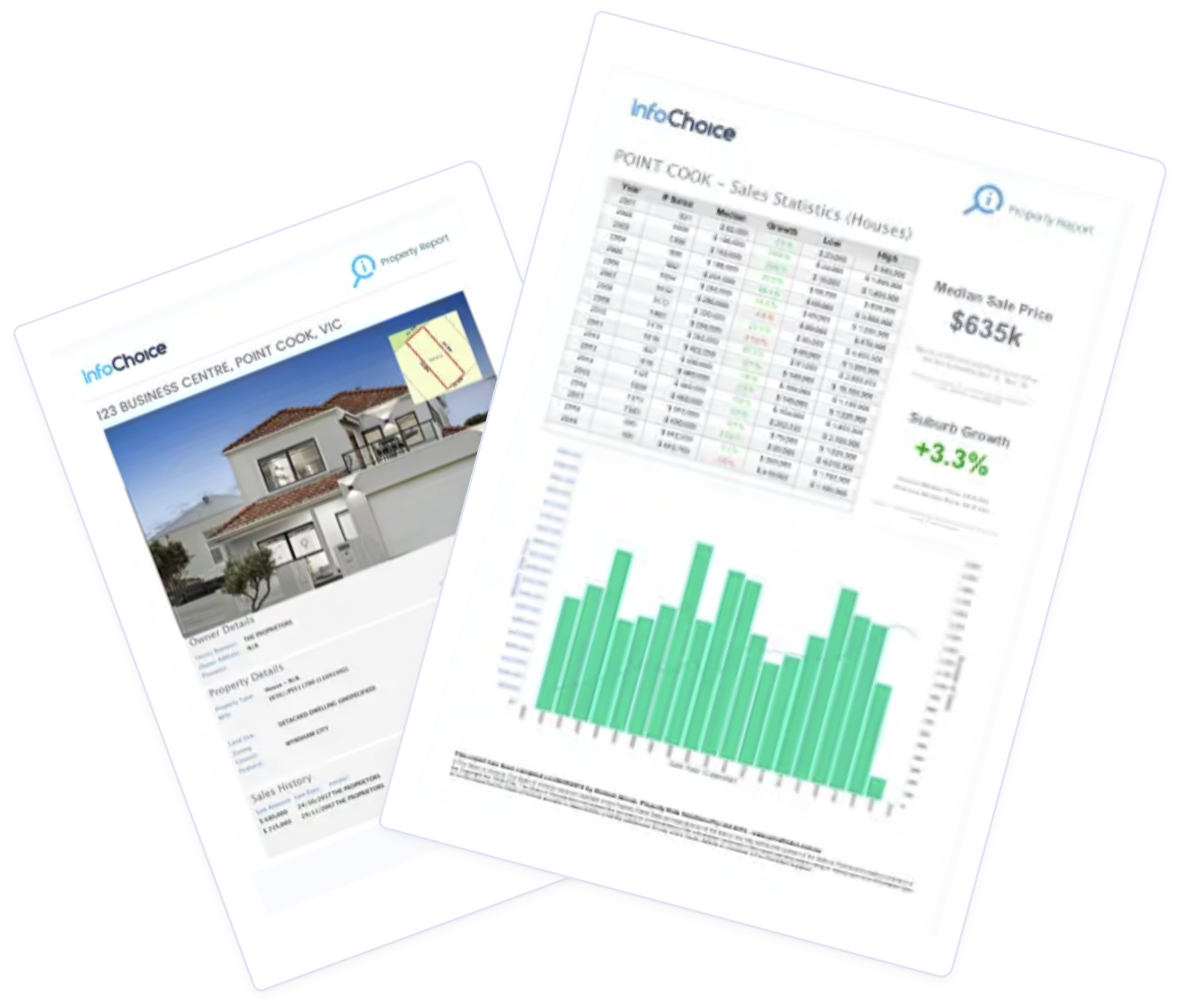
If you're looking to enter the property market, the real estate world is filled with specific terms and phrases, however, none is more common than the term 'home loan'. Below you'll find a guide to what a home loan is, as well as the types of home loans available to help make your great Australian dream a reality.
What is a home loan?
A home loan, also known as a mortgage, is a financial agreement between a borrower and a lender - typically a bank, credit union, or building society.
While the terms "home loan" and "mortgage" are often used interchangeably in Australia, they technically refer to different things: the home loan is the money borrowed to purchase a property, while the mortgage is the legal document that gives the lender the right to claim the property if the borrower fails to repay the loan.
The word mortgage comes from an old French term meaning "death pledge" - referring to the idea that the agreement ends either when the loan is fully repaid or when the borrower defaults. In Australia, however, the term simply means a home loan.
Home loans are typically repaid over a period of 25 to 30 years, with the property held as security. If the borrower falls behind on repayments or is unable to repay the loan, the lender has the right to force the sale of the property to recover the debt. This is known as recourse lending, where the lender can take legal action to recover the money owed. Unlike in some countries that offer non-recourse lending (where the lender cannot go after the borrower's other assets), Australia primarily uses the recourse model.
What types of home loans are there?
To understand which home loan best suits their needs, borrowers should arm themselves with as much information as possible about the home loan market. Sometimes the lender with the lowest interest rate isn't the most suitable mortgage provider. Borrowers should compare a range of home loan options, including fees, interest rates and home loan features, before making a decision about which home loan provider offers the most suitable home loan product.
Understanding the different types of home loans available can help you choose the right loan. Lenders have a wide range of home loan products to suit home buyers throughout all life stages - whether you're looking to secure your first home, a home for your growing family or planning or looking to make an investment purchase. That's why it's more important than ever to carefully compare home loan products across lenders.
There are two main features that should be considered when shopping around for a home loan - interest repayment type, and whether it's a fixed or variable interest rate. Beyond that, there are a few optional features to consider, including an offset account, redraw facility, and packaged home loans.
1. The Repayment Type
Principal & interest
Principal & interest (P&I) home loans are whereby you pay off both the interest and a portion of the original loan amount. It is the most popular type of home loan repayment in Australia as borrowers build equity into the home over time.
Interest-only
An interest-only (IO) mortgage allows you to make repayments on the interest portion of the loan. While available for both owner occupiers and investors, this option has traditionally been more popular for investors who can claim their interest repayments at tax time.
Investors with an IO mortgage can usually pre-pay their interest in advance for the next financial year, and lower their taxable income for the current financial year. An interest-only loan can also help you manage your cash flow as repayments are usually lower. But you'll still have to repay the principal loan once the interest-only period is over likely resulting in monthly repayments being significantly higher. This is because if you take out a 30 year mortgage, with a two-year interest-only period for example, your principal repayments will then be condensed into the remaining 28 years.
Interest-only options vary by lender; some don't offer them at all, some offer only three years, some might offer five, and some might offer up to 10. If the initial IO period is five years, it could be renewable for a further five with some lenders.
2. Look at The Type of Interest Payable
Variable rate
A variable rate home loan has an interest rate that can fluctuate over time, often in response to changes in the Reserve Bank of Australia’s (RBA) cash rate and other market forces. While the RBA reviews its rate eight times per year, lenders are not obliged to follow suit.
Lenders may adjust their rates independently - sometimes applying different changes for new and existing customers. This means your repayments can increase or decrease throughout the life of the loan.
Variable-rate home loans have traditionally been the home loan of choice in Australia. They have been more popular than fixed-rate loans, except for a brief period during the COVID pandemic, when fixed-rate loans experienced a strong surge in popularity.
Variable loans are typically more flexible than fixed-rate options and often include features like unlimited extra repayments, offset accounts, and redraw facilities. These can help you reduce interest and pay off your loan sooner.
The downside of a variable rate is that the rate can go up! This will see your minimum repayment increase (with notice from the lender), or if you’re making extra repayments, a bigger proportion of that will go towards interest, rather than the principal.
Fixed Rate
Fixed rate home loans offer a stable interest rate that's fixed for a set period of time - usually between one and five years. However, some lenders offer seven or even 10-year fixed rates. The good news is that a fixed rate home loan makes budgeting easier - you'll know exactly how much your monthly repayments will be for the fixed rate period. You'll also be protected from interest rate rises during that time.
With a fixed-rate home loan, you won't benefit from interest rate drops, and many fixed rate home loans don't allow you to make extra repayments or may charge a fee for doing so. In addition, historically fixed home loans have attracted higher interest rates than their variable counterparts.
When the fixed term expires, you'll likely be placed on the lender's standard variable rate by default, which is usually much higher, which could prompt the need to refinance. You'll also need to be aware of any break fees your lender may impose if you change or pay off your fixed interest loan before the end of the agreed period - this could add up to thousands or even tens of thousands of dollars.
Split Home Loans
While not technically its own product, a split or partially fixed home loan lets you have a foot in both camps. It allows you to set a fixed interest rate on a portion of your loan, while applying a variable interest rate to the remaining balance. This means you effectively have two home loans. This mitigates your risk of interest rates rising because you'll only pay the higher rate on the variable portion of your home loan. However, if interest rates drop, you'll also only receive savings on the variable portion.
There are usually no restrictions on making extra repayments on the variable portion of your loan, but break fees may apply to the fixed portion of your loan. It's best to check with your lender. The home loan that works for you will depend on the individual needs of your family and your financial circumstances - so it's worth comparing options.
See Also: Split Home Loan Calculator
3. Specialised Home Loans
Some situations call for more tailored solutions. Below are a few specialised home loan options that could better suit your unique circumstances.
Introductory Rate Home Loan (Honeymoon Loan)
An introductory rate loan offers a discounted interest rate for a short period - typically up to the first two years. This "honeymoon" phase can make early repayments more affordable, but once it ends, the rate usually shifts to the lender’s standard variable rate. It’s important to plan for the potential increase in repayments after the initial offer expires.
Home Equity Loan
A home equity loan allows you to borrow money using the equity you’ve built up in your existing property. It’s often used to fund renovations, consolidate debt, or cover large expenses. Since your home secures the loan, interest rates may be competitive, but the risk lies in potentially losing your property if you can’t meet repayments.
Low-Doc Home Loan
Low-documentation (low-doc) loans are tailored for borrowers who don’t have the usual income verification documents - such as freelancers or business owners. Instead of full financial statements, lenders may accept alternative proof of income. These loans generally have higher interest rates or stricter terms due to the increased risk to the lender.
Reverse Mortgage
A reverse mortgage is a type of loan for older homeowners, typically aged 60 and above, that allows them to unlock the equity in their home without selling it. Instead of regular repayments, the loan balance increases over time and is usually repaid when the home is sold, often when the borrower moves into aged care or passes away.
Reverses mortgages in Australia, by law, come with a ‘no negative equity guarantee’, meaning you won’t owe more on the home than it’s worth. The amount you can borrow against is also often quite conservative. However, you could still be in for a shock when you sell the home and the lender comes with its hand out.
4. Optional Extras
There are a few common options that crop-up on many borrowers' home loan journeys.
Offset Account
An offset account is a handy feature commonly found on variable-rate home loans, and to a lesser extent on fixed-rate home loans. They usually come with a monthly fee or an interest rate premium, but they can be effective at reducing interest payable over the life of the loan. The money is your own, sequestered away from the rest of the home loan. If you have $50,000 in an offset account and a $500,000 mortgage, you will only pay interest on $450,000.
You usually also get access to a debit card, so an offset account can act like your everyday bank account. However, beware because not all lenders are 100% offset - some might only offer 80% offset for example.
Redraw Account
A redraw account also lowers interest payable on the home loan, but is done through making extra mortgage repayments rather than acting as a bona fide separate bank account. The bonus with a redraw is that they are usually included at no extra cost on many variable-rate home loans and customers can redraw money if they need it.
A downside is that it's not sequestered away from the home loan like with an offset account. There have been instances of banks in the past that have taken money out of the redraw facility if their systems detected (correctly or incorrectly) that the customer was at-risk of falling behind on repayments.
Many customers also use a redraw facility for rainy day funds. However, the risk with this is if you have, say $50,000 remaining on your home loan, and $50,000 in the redraw, the lender could automatically siphon those funds into paying off the home loan.
Another factor is that you often need to apply to withdraw - it’s not simply a case of swiping a debit card like with an offset account. So you probably can’t treat a redraw like an everyday bank account.
Packaged Home Loan
Packaged home loans are usually a special subset of home loans that bundle other financial products like credit cards, insurance and more. Products either come at no extra cost or are heavily discounted. Packaged home loans usually come with extra fees, reflected in the higher comparison rate. Packaged home loans can be a convenient way to get a bunch of extra products, but you'll have to weigh up the cost of convenience and whether you'll even use them. They can also be harder to part with if it comes time to refinance.
Compare your home loan options
With the different loan types in mind, let’s compare the current rates lenders are offering. Seeing them side-by-side makes it easier to find a loan that fits your needs and budget.
| Lender | Home Loan | Interest Rate | Comparison Rate* | Monthly Repayment | Repayment type | Rate Type | Offset | Redraw | Ongoing Fees | Upfront Fees | Max LVR | Lump Sum Repayment | Extra Repayments | Split Loan Option | Tags | Features | Link | Compare | Promoted Product | Disclosure |
|---|---|---|---|---|---|---|---|---|---|---|---|---|---|---|---|---|---|---|---|---|
5.29% p.a. | 5.33% p.a. | $2,773 | Principal & Interest | Variable | $0 | $530 | 90% |
| Promoted | Disclosure | ||||||||||
5.19% p.a. | 5.10% p.a. | $2,742 | Principal & Interest | Variable | $0 | $0 | 80% |
| Promoted | Disclosure | ||||||||||
5.39% p.a. | 5.41% p.a. | $2,805 | Principal & Interest | Variable | $0 | $250 | 60% | |||||||||||||
5.59% p.a. | 5.76% p.a. | $2,867 | Principal & Interest | Variable | $0 | $0 | 90% | |||||||||||||
5.34% p.a. | 5.36% p.a. | $2,789 | Principal & Interest | Variable | $0 | $350 | 60% |
Applying for a home loan
The process of searching for a property, comparing home loans, generating pre-approval and finally purchasing a property can be overwhelming for many. Here we have broken down the process into a number of steps to take the guesswork out of applying for a home loan.
1. Save for a deposit
When applying for a home loan, most lenders require you to save a deposit before applying for a loan. The Australian Securities and Investments Commission (ASIC) recommends saving at least 20% of the value of the property to avoid paying Lenders' Mortgage Insurance (LMI). Having a deposit of less than 20% might also impact your interest rate.
However, with the way property prices are going, it can take years to save up for the full 20% - so weigh up your options when it comes to lower-deposit home loans, or if you’re a first home buyer, consider government programs like the First Home Guarantee.
2. Complete your application
When applying for your home loan, you'll be asked to provide proof of identification, income, along statements of assets and liabilities. Once your loan is pre-approved, you can start searching for the perfect property within your budget.
To speed up this process, it pays to have all of this documentation ready so you don’t have to keep going back and forth with your lender. Many speedier lenders can have you pre-approved within an hour or two.
3. Search for the right property
Once pre-approved, typically lenders will allow for three months to find the perfect property. After you've found a slice of paradise you are satisfied with, return to the lender to get formally approved. Many won’t formally approve you until you have signed a contract - in this case, you could make an offer or win at auction and then get the ball rolling.
4. Timing
When it comes to buying a house, it can be useful to apply for a home loan before you start looking at properties. That way, you'll have a good idea of your budget. And when it's time to put an offer on a house, you'll be able to move quickly with the bank.
Another reason to look at home loans is when you're considering refinancing your current mortgage. It's a good idea to re-evaluate your home loan periodically, especially as you enter different life stages. A pay rise or a new job, for example, could prompt you to pay off your mortgage sooner by using the additional money to make higher repayments.





